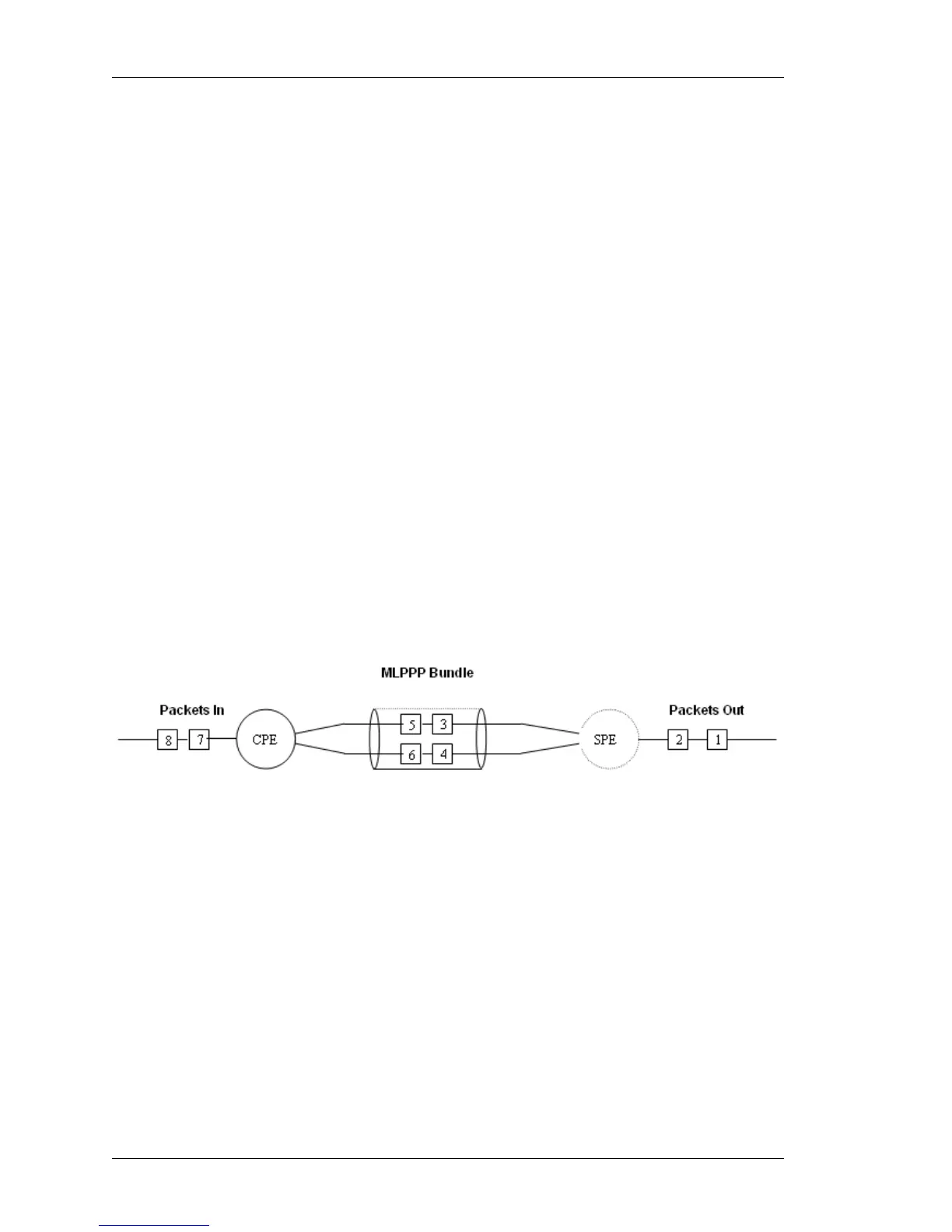Multilink Point to Point Protocol
Left running head:
Chapter name (automatic)
368
Beta Beta
OmniAccess 5740 Unified Services Gateway CLI Configuration Guide
Alcatel-Lucent
MLPPP OVERVIEW
WAN connectivity can be expensive for an enterprise, and often consists of T1 or
E1 or T3 or E3 lines. Some enterprises require more bandwidth than a T1 or an
E1 can provide, but cannot afford a T3 or E3. One option is to set up multiple T1
or E1 lines between the enterprise gateway and the ISP and use them as different
IP interfaces, and then perhaps use Equal Cost Multi-Path (ECMP) for load
balancing the traffic over these links. However, this solution requires re-
configuration at the IP level and can be potentially complicated.
A feasible solution is to create a virtual bundle interface between the system and
its peer, and attach multiple physical interfaces or channels to it on an as-needed
basis. All IP-related configuration is placed on the bundle interface. The member
links can be added or removed from the bundle at any time, and the bundle is up
as long as there is at least one member link. This mechanism leaves all IP
configuration intact, even while changing the bandwidth of the bundle by adding or
removing links.
The Layer-2 protocol needs to co-operate in this effort, so the peer can learn
about the fact that a link has been attached to a bundle. The protocol also needs
to help maintain this association.
The protocols that have been enhanced for this purpose are PPP and FR, as they
are common on serial interfaces, such as T1 or E1. The resultant technologies are
called Multilink PPP (RFC 1990) and Multilink FR (FRF 16.1).
MLPPP is an extension to PPP. See “Point-to-Point Protocol” for information
about PPP. Microsoft Windows, Linux, and other operating systems support
MLPPP. Many routers also support Multilink PPP.
Figure 31: Sample Deployment Scenario for MLPPP

